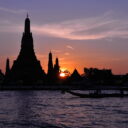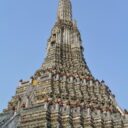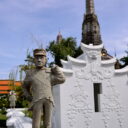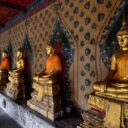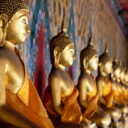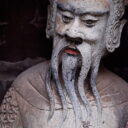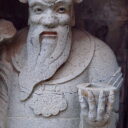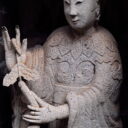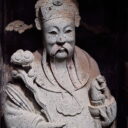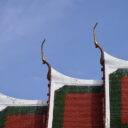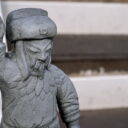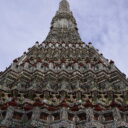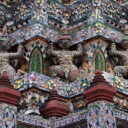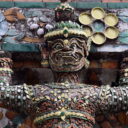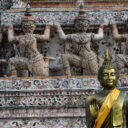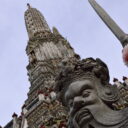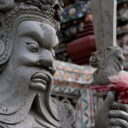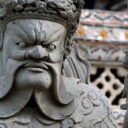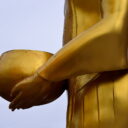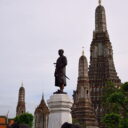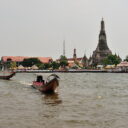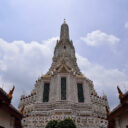Wat Arun on the west bank of Chao Phraya River was built sometime during the Ayutthaya period (1351 to 1767). King Taksin had his palace constructed next to this monastery in his reign (from 1768 to 1782) after he successfully drove away the Burmese. During the short time Thonburi was the capital of Siam, Wat Arun had enshrined the Emerald Buddha, which was later moved to Wat Phra Kaew on the other side of the river.
The highlight of this temple is “Phra Prang” – the central corn-shaped pagoda decorated with Chinese porcelain, a famous landmark of Bangkok. This 67-meter-high Khmer-style structure (86 meters, according to some sources) was added to the temple in the reign of King Rama II who gave this temple its current name.
Buddhist-Hindu cosmology and the beliefs of people in the early Bangkok period are well represented by this great structure. “Krung Thep”, the Thai name of Bangkok, means City of Angels. These angels are ruled by Indra, King of Heavens. Visitors can get a glimpse of him riding a three-headed elephant when they look up to the part of the stupa that symbolises Tavatimsa, his abode.
The latest restoration work started in 2013 and was completed in 2017 (1,2).
